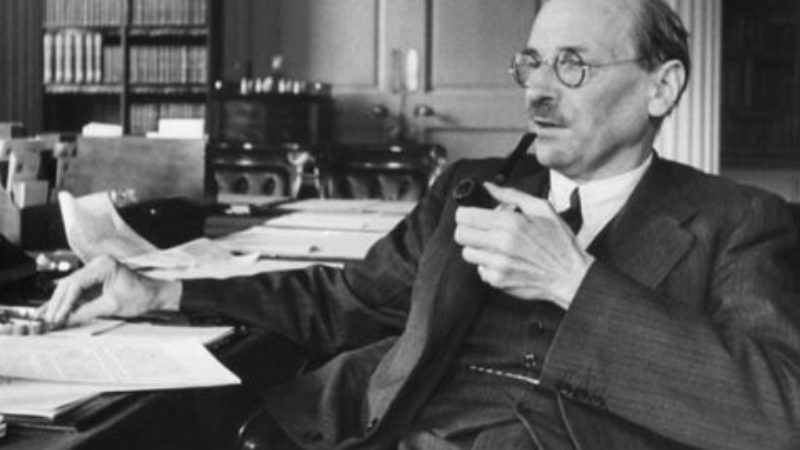
Stand by. Next month will see the 70th anniversary of Labour’s historic 1945 landslide victory. Dropping smack bang in the middle of the leadership campaign we can expect days if not weeks of Labour then and now comparisons. For the leadership candidates that want to fill Attlee’s shoes it will be obligatory to say something rousing about the NHS, balanced of course with something thoughtful about the far reaching challenges facing the welfare state and decline of the two party politics.
Some have been ahead of the game. Following on from May 7th a number of commentators have reached for Paul Addison’s classic book, ‘The Road to 1945’ for a spot of post defeat existentialism and a way of reminding us that to achieve big achieve social and economic change we need the holy grail of ideas and credible leaders bold enough to seize the opportunities that circumstance presents.

But there’s much else in Addison’s book besides the big picture – including lots of interesting twists, turns and sub-plots that one would hope Labour’s leadership candidates will be reflecting on in the weeks ahead. Here are three that, for one reason or and another, resonate in the current debate about the party’s future.
First, the experience of 1945 is a timely reminder that the political voice of business is seldom on the side of social and economic progress. As such putting a pro-business message at the front and centre of our future offer is a blind alley. Sure, there will always be huge areas of common ground between business and the broader labour movement on skills, infrastructure and industrial policy etc. But in terms of an organised political outlook and an agenda for influencing government and the media, business then and now wants a different kind of economy and society to the many – and will always moan like hell when it looks as though it will not get its way.
In May 1942, the Labour conference passed a resolution calling for a single comprehensive system of social security. Unbeknown to the party a delegation from the Confederation of British Employers (a forerunner of the CBI) had gone before the Beveridge Committee a week earlier and attacked his proposals as deeply damaging to business. Although these business leaders were reluctant to go on the record (they knew how popular such a social security system was with the public) they were adamant that the extra contributions would spell ruin. Needless to say they were wrong.
The same goes for numerous other examples that echo down the ages – from the CBI’s opposition to the National Minimum Wage (until it was inevitable), the EU social chapter, right up to the current day and their shocking support for highly ideological anti-trade union measures recently announced in the Queen’s speech.
Clearly Labour should never allow itself to be caricatured as anti-business. But it must be true to itself and be unafraid to speak with its own distinctive voice and show that it can reflect and balance wider interests. Recent polling by the TUC suggesting more voters than not wanted Labour to be tougher with business shows that the public are ahead of the curve on what is an identity issue for Labour in a period in which more voters than ever struggle to understand what it stands for.
Secondly, despite the party’s tribal instincts, Labour’s 1945 programme is a great example of dramatic political and economic change coming about with the help of broader and deeper progressive currents. We need to be thinking about how we do this now. In 1945 these broader currents were exemplified by policy experts like Keynes and Beveridge, professional bodies like the Town and Country Planning Association, social investigators of poverty and malnutrition such as Rowntree and Boyd. It also built on the leg work of pressure groups like the Next Five Years Group and Political and Economic Planning who had blazed a trail from the 1930s on public services, housing, education and family allowances.
Thinking through and developing such a movement for today is an essential task. This should involve being open and inclusive to the people, ideas, campaigners and institutions that flow in the same direction as us on the big challenges of our time: combating growing inequality, defending public services and the welfare state from austerity, holding corporate power to account, tackling climate change and re-booting our democracy.
Third, 1945 is a model in terms of politics being for a purpose – just what we need now to counter the accusation that all politicians are the same and just in it for themselves. As Addison stirringly puts it, the Labour movement’s mix of trade unions leaders (Bevin and Citrine) and political leaders (Attlee and Morrison) were always pragmatic, and clearly seen as in it to get things done rather than climb to the top of the greasy pole:
‘Their beliefs about means were continually changing but the end remained constant. The next Labour government must deliver tangible benefits…….Election victory was only the preliminary: jobs, higher wages and pensions, better social services must follow.’
70 years later that’s as relevant as ever. What do Kendall, Burnham, Cooper and Corbyn want to get done?
David Arnold is the policy officer at Unison



More from LabourList
Rochdale Labour says brick thrown at candidate’s home with ‘f*** Labour’ note
‘Frank’s poverty mission lives on at his charity – but he’d scrap two-child cap’
‘I disagreed with Frank Field, but he was no Tory and I loved him all the same’